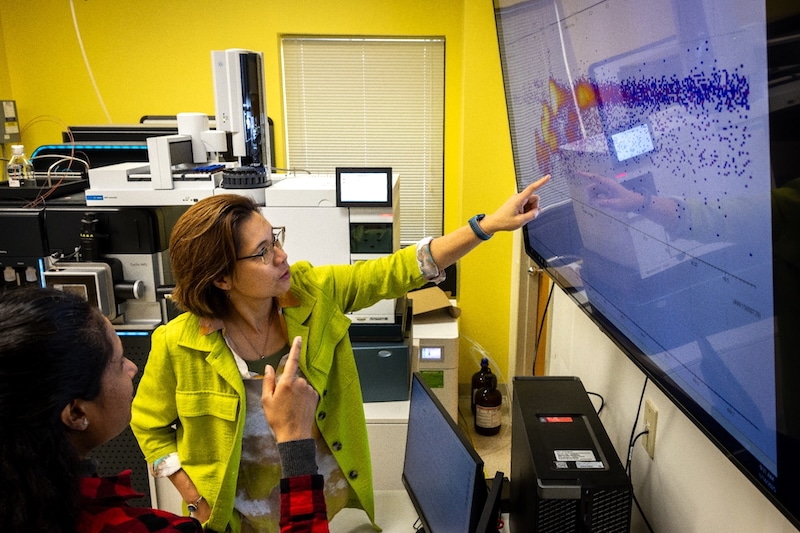This post was originally published on Eco Watch
Per- and polyfluoroalkyl substances, or PFAS, have taken on the nickname “forever chemicals” for their inability to break down in the environment. These chemicals, which are found in everything from food packaging to camping gear, are popular for their stain-, moisture- and grease-resistant properties, but they have been found to accumulate in the environment and in human bodies.
But now, researchers may have cracked a way to break down these chemicals and even some of their byproducts, which can be toxic, by using strains of bacteria.
A team of scientists led by University of Buffalo researchers found that the bacteria Labrys portucalensis F11 was effective at breaking down at least three types of PFAS, including the most common forever chemical, perfluorooctane sulfonic acid (PFOS), as well as 5:3 fluorotelomer carboxylic acid (FTCA) and 6:2 fluorotelomer sulfonate (FTS).
Professor Diana Aga, the study’s corresponding author, says the bacteria could one day be deployed to break down PFAS in wastewater treatment plants. Meredith Forrest Kulwicki / University at Buffalo
The bacteria was the most effective at breaking down PFOS, a chemical that was designated as hazardous by the U.S. Environmental Protection Agency (EPA) in 2024. It degraded more than 90% of the compound over a 100-day exposure and removed up to 96% of the PFOS after 194 days. During the first 100 days, the bacteria broke down as much as 58% of FTCA and 21% of FTS. The scientists published their findings in the journal Science of The Total Environment.
“The bond between carbon and fluorine atoms in PFAS is very strong, so most microbes cannot use it as an energy source,” Diana Aga, corresponding author of the study, said in a statement. “The F11 bacterial strain developed the ability to chop away the fluorine and eat the carbon.”
In addition to breaking down the PFAS, the bacteria also broke down the metabolites that occur after the PFAS degradation, with Labrys portucalensis F11 even breaking down or fully removing fluorine in some of the study results.
“Many previous studies have only reported the degradation of PFAS, but not the formation of metabolites. We not only accounted for PFAS byproducts but found some of them continued to be further degraded by the bacteria,” explained Mindula Wijayahena, first author of the study and a Ph.D. student in Aga’s lab.

Mindula Wijayahena, the study’s first author, analyzed the samples containing PFAS and the bacteria following incubation in Portugal. Meredith Forrest Kulwicki / University at Buffalo
This particular bacteria strain has been previously revealed to degrade fluorobenzene, a flammable and hazardous compound sometimes found in insecticides.
The discovery offers a novel method for cleaning up PFAS; other methods have primarily focused on adsorbing and removing the PFAS, but the bacteria could help break down these chemicals and minimize the amount of time they spend in the environment.
A 2024 study uncovered a way to track PFAS contamination to the source, and a separate study published in 2023 a potential water treatment that would use adsorbing materials and electro- and photochemical processes to destroy PFAS contaminants in drinking water supplies. Yet another separate study published in 2022 found a plant-based material that could help adsorb PFAS, which would then be digested by fungus.
The study authors using Labrys portucalensis F11 for PFAS metabolization will continue their research, noting that although the bacteria did break down the PFAS, it took nearly 200 days, and that was without other food sources present.
“We want to investigate the impact of placing alternative carbon sources alongside the PFAS. However, if that carbon source is too abundant and easy to degrade, the bacteria may not need to touch the PFAS at all,” Aga said. “We need to give the F11 colonies enough food to grow, but not enough food that they lose the incentive to convert PFAS into a usable energy source.”
The post Scientists Identify Bacteria That Can Break Down Some PFAS and Their Byproducts appeared first on EcoWatch.





0 Comments